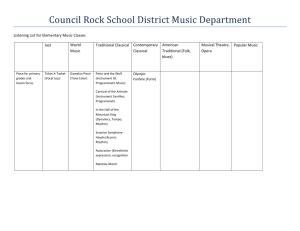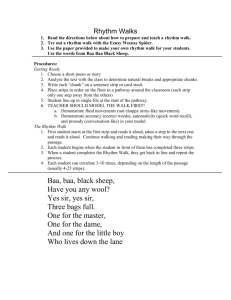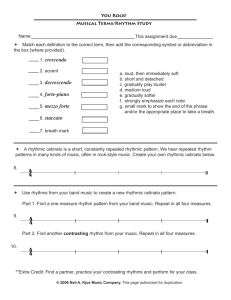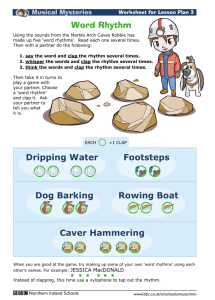2d Design Presentation
advertisement
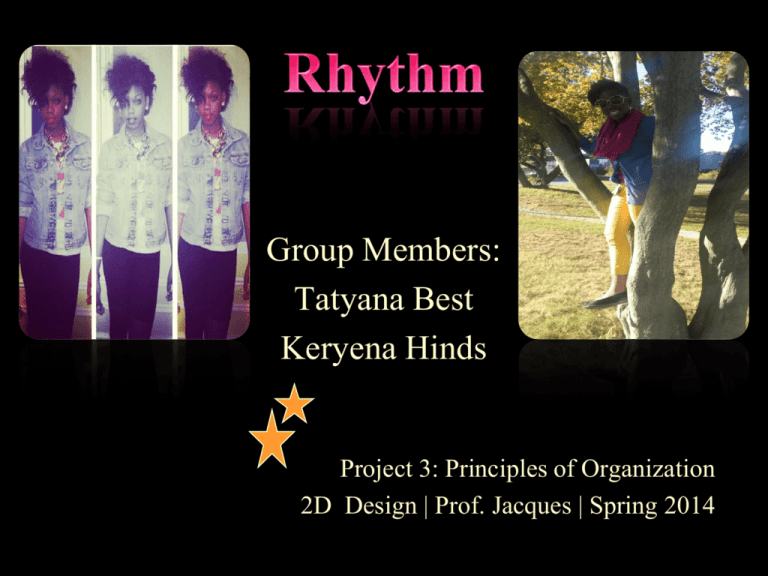
Group Members: Tatyana Best Keryena Hinds Project 3: Principles of Organization 2D Design | Prof. Jacques | Spring 2014 • Rhythm is most easily understood within music. Rhythm represents our desire for order. Rhythm is easily perceived but complex and subtle. Rhythm can be described as timed movement through space, an easy, connected path along which the eye follows a regular arrangement of design. Rhythm depends largely upon the elements of pattern and movement to achieve its effects. Rhythm • Linear Rhythm ( Flow ) is one way visual Rhythm is formed. Linear rhythm is not as dependent on pattern, but is more dependent on timed movement of the viewer's eye. In this image, gradation is used in the background to give it a feeling of different space between the lines. Rhythm • Repetition is the use of patterns to get timed movement and a visual "beat". Some artist makes it clear in the elements of their composition, or some artist make more of an indirect kind of repetition. Which is represented by the image below. Rhythm • Alternation is a certain type of patterning in which patterns of the same elements reappear in a regular order. Ex: In this image the pattern repeats from (big/small dark/light). Also the use of vibrant allows our eyes to flip back and forth. Rhythm Random Rhythm Groupings of similar motifs or elements that repeat with no regularity create a random rhythm • Progressive Rhythm this rhythm also involves repetition, but repetition of a shape that changes in a regular manner. It is mainly achieved with a progressive variation of the size of a shape, however its color, value, or texture could be the varying element. Progressive rhythm is very common in nature. Rhythm • Polyrhythm Structure is the most complex rhythmic structure we can credit to an artwork, or musical piece. The overlay of several rhythmic patterns produces a complex result, even if the parts are simple. Rhythm Rhythm The red dots almost connect the shapes into a wave hence, creating movement The repetition and position of the different geometric shapes creates a pattern and movement which makes the eyes move in a wave Random rhythm • http://oliveirarafael98.wordpress.com/2012/09/07/rhythmcomposition/ • http://www.mosaicartnow.com/2010/07/exploring-theuniversal-appeal-of-rhythm-repetition-and-novelty-inmosaics-2/ • https://sites.google.com/site/learndesigns/alternatingrhythm • http://char.txa.cornell.edu/language/principl/rhythm/rhyth m.htm • http://www.sophia.org/tutorials/design-in-art-repetitionpattern-and-rhythm • Design Basics 8th Edition by David Lauer/Stephen Pentak Rhythm • Rhythm is a basic characteristic of nature • Rhythm as a design principle is based on repetition • Rhythmic structures in visual art and design are often described in terms borrowed from music vocabulary • Most often we think of rhythm in the context of shapes and their arrangements Rhythm


